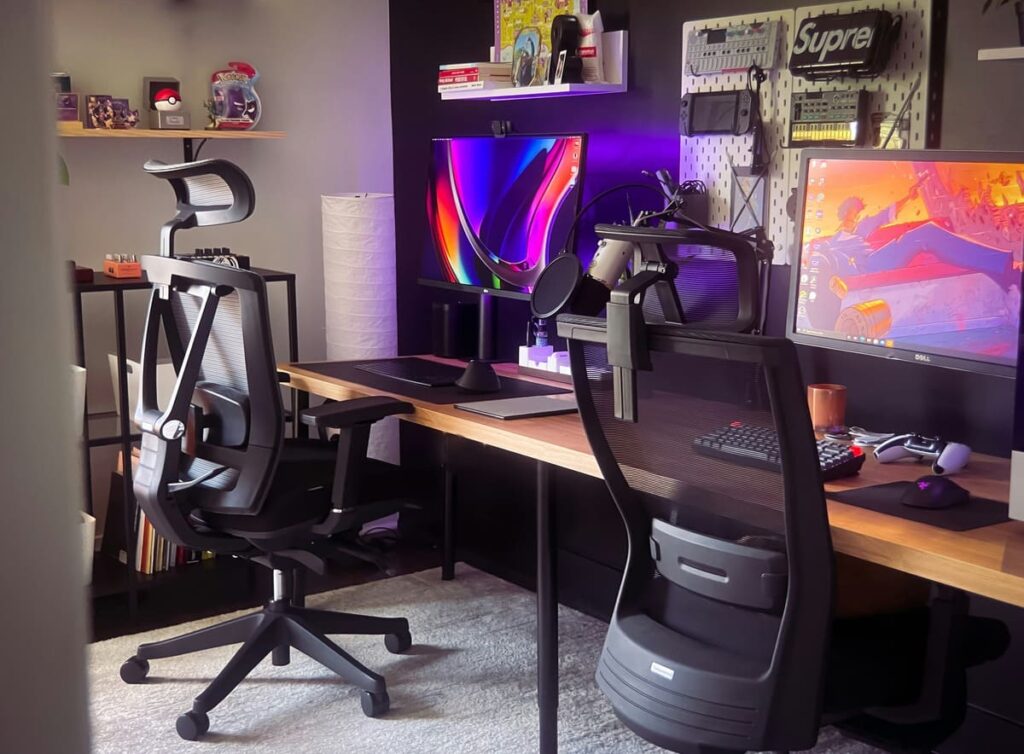Introduction
The rise of remote work has brought the home office into unprecedented focus. As more people find themselves working from home, creating a workspace that is both productive and healthy has never been more critical.
An ergonomic home office setup can significantly reduce the risk of musculoskeletal disorders, which are commonly associated with poor ergonomic practices.
This post delves into five essential tips to help you achieve ergonomic excellence in your home office, ensuring both comfort and functionality.

1. Understand Ergonomics
Ergonomics is the science of designing the workspace, keeping in mind the capabilities and limitations of the worker. Poor ergonomics leads to frustrated and fatigued workers that don’t do their best work.
Despite its frequent association with office environments, ergonomics is crucial for home office setups where individuals have more control over their workspace but less guidance on setting it up correctly.
The Importance:
Ergonomics helps prevent injuries from repetitive actions and poor posture by ensuring that the workspace conforms to the user instead of the other way around.
Statistics:
According to the Bureau of Labour Statistics, musculoskeletal disorders account for about 33% of all worker injury and illness cases.
Productivity Boost:
A well-set ergonomic environment not only minimises health risks but can also increase productivity by as much as 11%.
2. Choosing the Right Chair
The office chair is perhaps your most significant relationship in the home office; you spend hours on it every day. Here’s how to choose the right one:
Essential Features:
Look for chairs with adjustable height, lumbar support, armrests, and a comfortable seat.
The Right Posture:
Your knees should be at about the same height as your hips, and your feet should rest flat on the floor.
Adjusting Your Chair:
Tailor every aspect of your chair to fit your body. This includes adjusting the chair height, backrest, and armrests to ensure your back is well-supported, and you’re at an optimal distance from your computer.

3. Desk Setup and Screen Placement
The arrangement of your desk and the placement of your screen can have a significant impact on your health and productivity.
Desk Height and Distance:
Ideally, the top of your monitor should be at or just below eye level, and you should have enough desk space to allow for the correct placement of your screen and keyboard.
Monitor Setup:
Position your monitor approximately an arm’s length away. If using multiple monitors, ensure they are at the same height and close together to minimise neck movement.
Effective Lighting:
Good lighting is crucial to avoid eye strain. Position your desk to benefit from natural light while avoiding glare on your screen.
4. Keyboard and Mouse Setup
Incorrect positioning of your keyboard and mouse can lead to repetitive strain injuries.
Keyboard and Mouse Position:
These should be placed in such a way that your wrists are not bent while typing or using the mouse.
Ergonomic Products:
Consider ergonomic products like a split keyboard or a mouse designed to reduce strain.
Exercises:
Integrate hand and wrist exercises into your routine to improve strength and flexibility.

5. Taking Regular Breaks
Regular breaks are essential not just for your physical health but also for mental clarity.
The Science:
Studies show that brief, frequent breaks can significantly reduce the risk of musculoskeletal pain and eyestrain.
Break Strategies:
Stand, stretch, or walk for a few minutes. Apps like ‘Time Out’ or ‘Stretch Clock’ can remind you to take breaks regularly.
Activity Suggestions:
Use break time to do physical activities like stretching or yoga poses that relieve muscle tension and improve circulation.
6. Creating an Active Workspace
Incorporating movement into your workspace can enhance your overall health.
Dynamic Furniture:
Consider a standing desk or an under-desk bike. These tools help you stay active even during long work hours.
Health Benefits:
Regular movement has been shown to reduce the risk of cardiovascular disease, improve mental health, and boost creativity.

Conclusion
Setting up an ergonomic home office is an investment in your health, productivity, and comfort.
By understanding the basics of ergonomics and applying these essential tips, you can create a workspace that not only meets your work needs but also supports your physical and mental well-being.
Don’t underestimate the impact of a well-designed workspace. Take the time to make these changes and consult with a professional if necessary to ensure you are doing the best for your body and your career.




